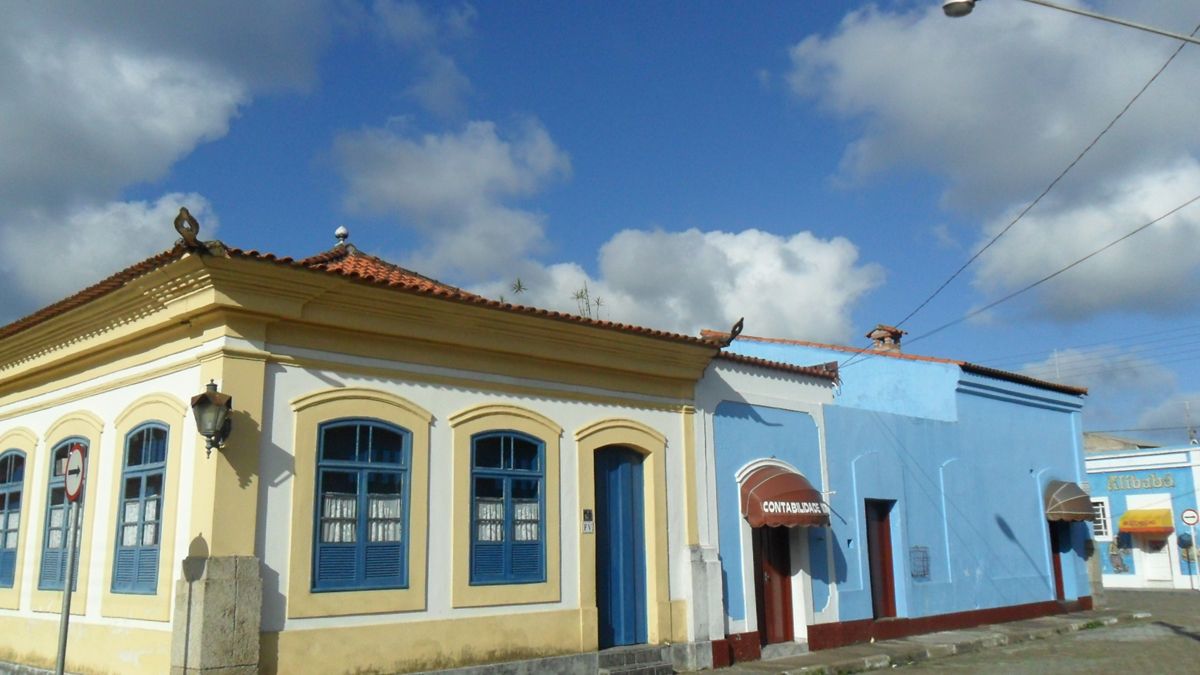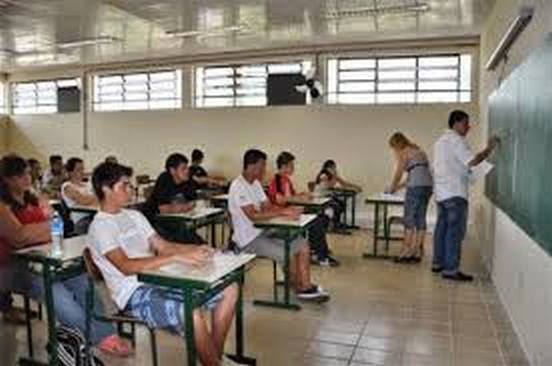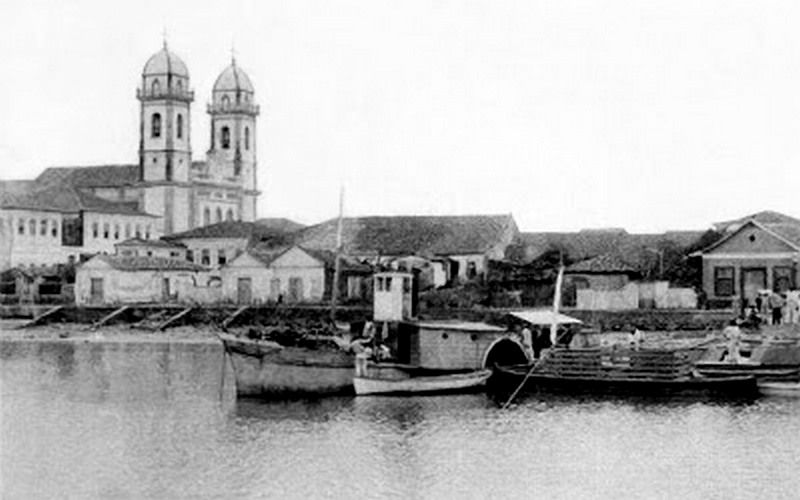The story and ancestry of Iguape and professor Bento Pereira Rocha

Prof. Bento Pereira Rocha
The story and ancestry of Iguape and professor Bento Pereira Rocha
Iguape in pictures Prof. Bento Pereira Rocha - March 19, 2019 exactly there are 122 years was born one of the most prominent educators that the city of Iguape ever had and one of his figures most notable: professor Bento Pereira Rocha, which had decisive participation in teaching and in public life in Iguape. Was born in caçapava (São Paulo) on the day 19 March 1897. made the course primary in his Homeland, the gym in White House (São Paulo) and the teaching in São Paulo (capital), in normal school of the square of the Republic, today school "Caetano fields". After graduation, came to Iguape, where taught in schools located in neighborhoods jipovura and Icapara in 1920, log in 1922, pariquera-ACU in 1923, being transferred to Iguape in 1928 as deputy.
Worked in the group school "Vaz walks" until 1930, being appointed director in July 1, 1931. the family married up in December 8, 1921, with Dona Pauline de Oliveira Rocha, natural Iguape, born on day 20 March 1897 (a day after her husband).

Dona Pauline was daughter of the notary Francisco firmino bridges Oliveira and Dona Anna Daisy corner Oliveira. Were his brothers: Maria Paula de Oliveira rollo, married to captain Augusto rollo; Mario de Oliveira, married to hermínia Veloso de Oliveira, Olga de Oliveira Ribeiro, married to altamiro Martins Ribeiro; adalgisa de Oliveira wheat, married to sizenando wheat junior; profª Rita de Oliveira, and profª Maria of sorrows Oliveira. The couple Bento and Pauline had seven children: Maria Estela de Oliveira Rocha Ribeiro, married John Geraldo Ribeiro; Oscar de Oliveira Rocha, married to Noli Rocha, Fabio de Oliveira Rocha, married to professor jocy Rita Cardoso Rocha, José de Oliveira Rocha, married to Antoinette corvine Rocha; Francisca Teresa de Oliveira Rocha and Silva, married John Joseph dos Santos Silva; professor dinorah de Oliveira Rocha, deceased in 1955 in tragic accident the valo large, single, and Daisy Maria de Oliveira Rocha, deceased singles.
The struggle for normal school teacher Bento Pereira Rocha had decisive participation in the struggle for installation school normal Iguape. It is true that, at the end of the last century, approximately between the decades 1870 and 1880, existed in Iguape a normal school. Therefore, However, was extinguished and for many decades the city was private of the ordinary course. During this period, students normalistas were required to study in other cities, especially botucatu, where graduated great contingent of teachers Iguapenses. The movement for implementation of course Magisterium won force from 1930, when it was created the Commission pro-normal school, that much fought for conducting this dream, with the aid of people important and society at large.

This Commission was founded in the 11th July 1930 and was composed of members highlighted society Iguapense, such as the pharmaceutical waldomiro of Barros athayde, professor Carlos of Assisi Veloso, director of the group school, the trader benedito Alves Ram, journalist John Boniface of Silva, the trader and political captain Mario of andrada rollo, the trader Manoel izidro olive and professor Bento Pereira Rocha, which then it would be the director of the group. Finally, in the 1st August 1930, was inaugurated the normal school free Iguape, when they were initiated classes. This course had 38 students, 12 teachers, almost all of the group school. Was directed by professor Carlos of Assisi velloso and had as Secretary professor Bento Pereira Rocha. The normal school had still pathways pharmacy and dentistry for admission in colleges specialized. Enthusiasm reigned in the spirit of all. Went to start the publication of a tabloid, entitled "the normalista", whose first number left in the 12th October 1930, being the "orgam of alumnos school normal free Iguape".
It was, at first, a private school, functioning as-school normal, even though it was hoped for brief your official government, which Unfortunately, despite the efforts, didn't happen because shortly thereafter this school has closed. For many years the city ran out of any kind of secondary education, until the year 1947, was officially created the gym Iguape, which first worked in the dependencies "Vaz walks", and your building own opened in 1951, when graduated the first class ginasiana. From this year, intense agitation took account of the students and society Iguapense therefore once opened the gym, all wanted to also that was created a normal school, which work on the same building gym. The ordinary course would only be created in 1953, and already in 1955 is formed the first class of professorandos. This course was maintained by city Hall and was called normal school municipal "Prof. VEIGA junior" in honor of the great educator Iguapense José Bueno of VEIGA junior, and worked in the dependencies gym state Iguape, so called "Colonel Jeremiah junior".

Only a few years later is that it was built building itself to House the normal school, located in Ave. Adhemar of Barros, this time already maintained by the state and possessing, in addition to the courses normal and high school, courses professional, for this reason for many years this school was called "industrial", and today school state "Prof. VEIGA junior." The revolution 1932 professor Bento Pereira Rocha has always been an advocate unconditional Democratic principles. When erupted the revolution constitutionalist 1932, not thought twice in engage in the fight that mobilized all the people Paulista, which required of Vargas around the country to the constitutionality. Our city did not leave to pay their efforts to the cause of São Paulo. It was created the glorious Battalion Redeemer children of Iguape, which participated professor Bento Rocha, alongside other heroic young Iguapenses.
This Battalion left for the "front" on the day 4 August, for juquiá, to combat the forces getulistas there installed. For starting this Battalion, organized is a great celebration, in order to honor those brave and fearless young people who went toward to fields battles, risking life itself for the defense of honor of São Paulo. Initially, the members of the Battalion attended the mission celebrated by father Henry harbeck. Then immediately, by a Commission ladies Iguapenses, was served hot chocolate and sweet to volunteers. Then, despite the torrential rain that fell on the city, the platoon paraded garbosamente the streets Central Iguape, under the enthusiastic applause of the people Iguapense. At the Port general Osorio, affectionately called Port large, where he gave boarding, next to the authorities and people GMs, acotovelava is the crowd. Crowning the ceremony farewell, two girls of society, in a gesture who left look through patriotism and faith of women Iguapense, preached the uniform of volunteers medals with effigy of good Jesus.
Made to hear several speakers, among them, John Boniface of Silva, Joaquim de Souza Oliveira and educator amância Alves Muniz. Finally, under the acclaim civic of those who were on the ground, steam Rio de unaafastou is leading the brave soldiers Iguapenses. This platoon, composed of 41 volunteers, was commanded by sergeant José Walnut and took on board also the director of the group school of Iguape, professor Bento Rocha. Incorporated into this platoon, followed also 17 young city canaanite. Sergeant José Walnut was also the author of the hymn of the Battalion Redeemer, sung the full lungs by volunteers towards the battlefields, who had the following estrebilho: "constituent ... constituent ... we want times thousand or win this fight or die by Brazil."
An educator exemplary professor Bento Rocha, in his long life dedicated to education, was also assist inspection by visiting all sites nearby in boats, along with inspectors and delegates teaching of the city of Saints, where was the headquarters of the police station regional. For it had no Sun or rain, cold or heat that do miss the fulfillment of his duty. Several times was invited by delegate teaching Santos, to exercise the office of inspector teaching or even delegate in the city of guarujá, declining of calls to continue in Iguape. In 1956, was invited to exercise the position of director at school state "Prof. VEIGA junior", which was for a few years, and also exercised office of inspector teaching gym state Jeremiah junior. Received the municipality of Iguape the title of citizen Iguapense, decoration that expressed the recognition of the population of the city by figure always well liked and respected teacher Bento Rocha.
The government of state of São Paulo also paid tribute professor Bento Rocha, giving your name to a school of the city of diadema (São Paulo). This college, in first and second-degree, is located in the neighborhood guacuri, on the Street of piraíbas, 17, diadema. Professor Bento Pereira Rocha died in São Paulo on the day January 1, 1969, after a lifetime of dedication to education of children and youth youth. Roberto strong, historian and journalist, is licensed in letters partner of the Institute history and geographic of São Paulo. Email: robertofortes@uol.com.br (rights reserved. The author authorizes the transcription whole or in part of this text with due Quote of the credit).  comments posts most visited this blog Iguape in 1915
January 17, 2019  this beautiful Photo published in the Journal "Fon-Fon", Rio de Janeiro (edit # 28, of 10-7-1915), we see an angle little photographed the then off the Matrix. On the left side, the imposing sobrado where currently operates at home Parish. At the time, belonged to the legendary Colonel Jeremiah junior (1872-1929), who resided in the floor upper and was owner "typographia St. Joseph" in the floor lower, as shown in tablet placed on the facade of the property, on the left side. The property next door, where today there is a garage the House Parish, was a House in Colonial style. Analysis this "photographia", we realize that the other real estate remain the same way, except for property that a few years later, it would be the sobrado of Joseph olavo rollo, located at the right side of the sobrado of rollo (this the second floor, after the House Parish) that, so if realize in the picture, still had not been built. People dressed strictly speaking walk quietly down the Street still Earth (the calçame ... read more Street fifteenth November in 1954 -
January 18, 2019  the Street fifteenth November is among the playgrounds the oldest of the city was called originally from "Street of glory". After the declaration of the Republic, 1889, his name was changed to "Street fifteenth November". In this Photo, published in the Journal "Brazil magazine", Rio de Janeiro (number 38, 1954), we see an angle little photographed this Street. Realize that the mansions still retain practically the same way, particularly if, on the right side, the imposing "sobrado of comendador" (Palace municipal "Mayor Carlos Fausto Ribeiro", currently being reform, by iphan), property that belonged to the legendary comendador Luiz álvares of Silva (1808-1883), one of the men richer and influential South of São Paulo in time of the Empire. The comendador álvares was deputy provincial by Iguape.
See five preoccupied children playing on the floor of Earth. Would be playing balls of marbles? One of them, standing, upside down, is dress pants social, with collect and even using Sapa ... read more drama Stone of passion - 26 Feb 2019  old Trias today property particular, the Stone of passion, located in one of the buttresses of the Hill of spy in Iguape, guard many stories. It was there the scene of a dramatic love affair. Perhaps Shakespeare had more talent for narrate this drama. In the absence of the Bard English, it's up to this little inspired chronicler tells it to your few more faithful, readers. Managed to find two versions of this story: a having as protagonist John Brook Aguiar, according to reports the weekly "Tribune Iguape" a edition 1923, and another, told by Writer Paul of Avelar, appointing the young as John Teodoro. Would be the same person?'S what we see in the course of this survey history. Primera version let's look at, first, which tells US the newspaper "Tribune Iguape". Late on 1st February 1923, the young John Brook Aguiar, "19 annos old, auxiliary of commercio this square, by reason not to be well matched in their loves", shot to ... read more technology blogger images theme by Veronica Olson  file report abuse